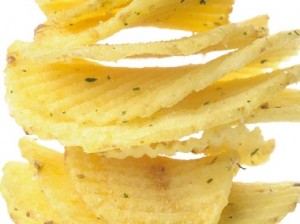 In my last post, we explored the causes of cravings—a difficult challenge when you have diabetes. Mindfulness—awareness of the present moment—puts space between your cravings and your response, giving you an opportunity to gather information and choose how you’ll respond. So let’s talk about how to handle cravings mindfully.
In my last post, we explored the causes of cravings—a difficult challenge when you have diabetes. Mindfulness—awareness of the present moment—puts space between your cravings and your response, giving you an opportunity to gather information and choose how you’ll respond. So let’s talk about how to handle cravings mindfully.
Pause for a Body-Mind-Heart scan. Pause to notice what’s going on when you’re craving a particular food.
- Body: Focus on your physical sensations including hunger, thirst, fatigue, discomfort, pain, or symptoms of hypoglycemia.
- Mind: Notice your thoughts. Besides the food you are craving, what other thoughts do you have? For example, “I’ll never get this all done!” might be driving the desire for an escape into a bag of potato chips.
- Heart: Next, focus on your emotions. What are you feeling right now? For example, could feeling stressed out be the reason you’re craving homemade chocolate chip cookies—a treat that reminds you of a simpler time in your life?
Get curious! See if you can connect the dots to figure out where your craving came from. For example, had you recently seen a commercial, billboard, or ad for that particular food. (There’s a reason companies spend billions of dollars on advertising!) Do you have an association with this particular person, place, or event? Does your craving give you any clues about what your needs are right now? (Think comfort food!) With diabetes, consider whether your diet is contributing: are you eating a balance of carbohydrates, protein, and fat to keep your blood sugar stable?
Is there some other way to meet your need? We have a saying: When a craving doesn’t come from hunger, eating will never satisfy it. Often, that nagging desire to eat something even though you’re not hungry is a hint of an unmet need. By identifying what you’re feeling, you’ll be better able to identify the underlying need. For example, if you feel lonely, you may need connection. If you feel overwhelmed, you may need help, prioritization, or a break. What small step can you take to meet your need? Ultimately, meeting your true needs will be more satisfying than eating.
Eat mindfully. There is nothing wrong with eating a food that you’re craving! Granted, you’ll enjoy it more when you’re hungry, but either way, eat it mindfully without distractions. After all, if you wanted it that bad, then it deserves your full attention.
Don’t feed the Eat-Repent-Repeat Cycle. What you resist persists—and insists! If you are experiencing guilt and telling yourself that you shouldn’t be eating that food, you may paradoxically find yourself eating more of it! Allow yourself to enjoy it fully, mindfully, and without guilt. (Read Got Cravings? Three Words to Eliminate from Your Vocabulary.)
Remember balance, variety, and moderation. All foods can fit into a healthy diet so there are no good or bad foods—even when you have diabetes. If the food you crave contains carbohydrates, count them in your snack (typically 15 to 30 grams) or meal (typically 45-75 grams). By eating a moderate amount of carbohydrate and balancing it with protein and fat, you can prevent a drop in blood sugar that will lead to more cravings. (For a great overview of carbohydrates, read chapter 12 of Eat What You Love, Love What You Eat for Diabetes.)
Practice self-care. By taking care of yourself consistently, you are less likely to crave food to fill the holes in your life!
